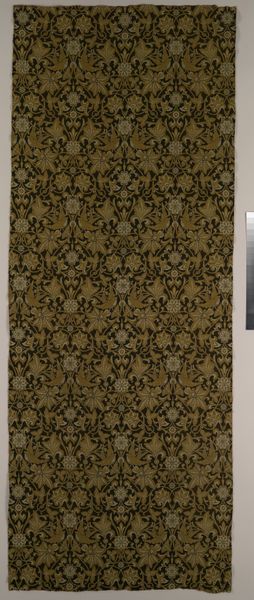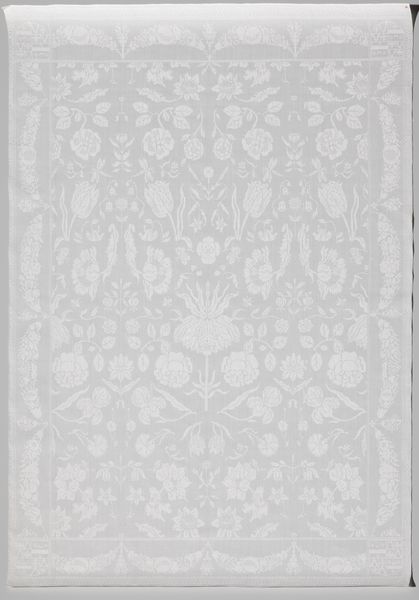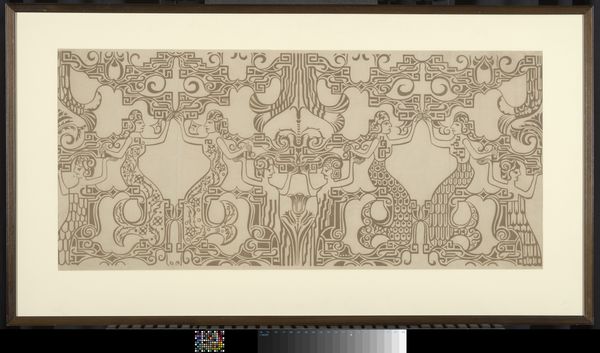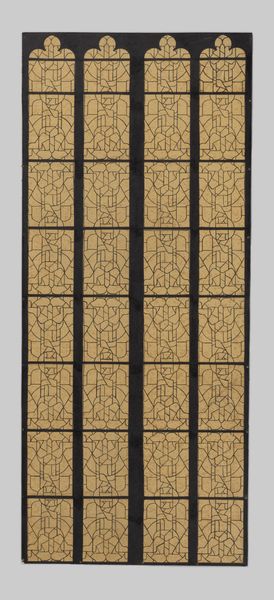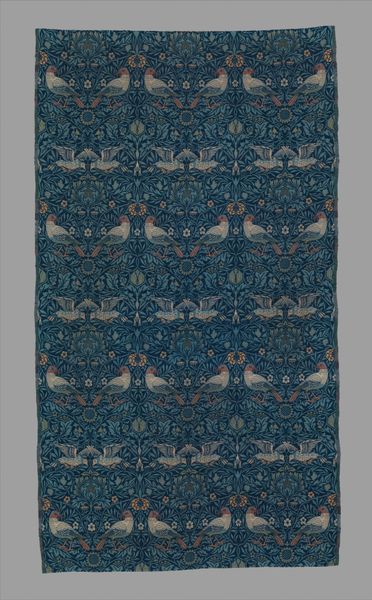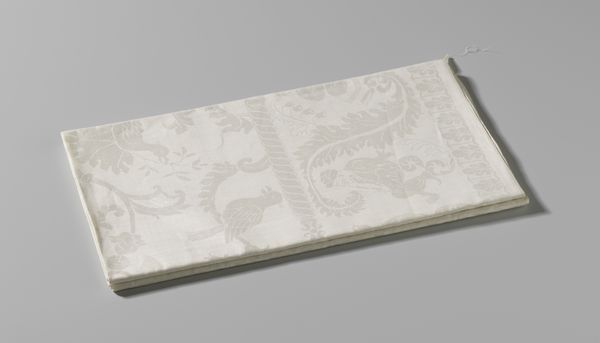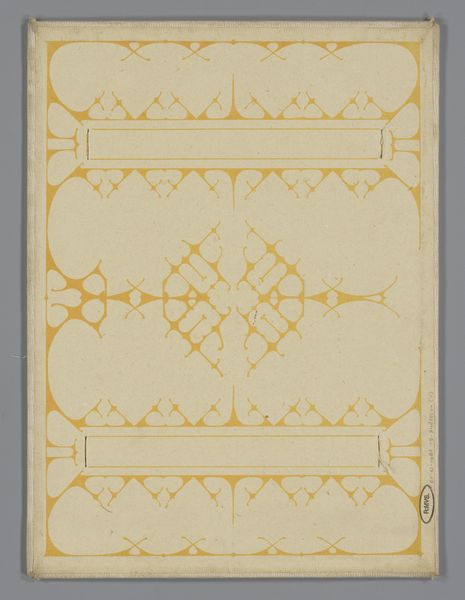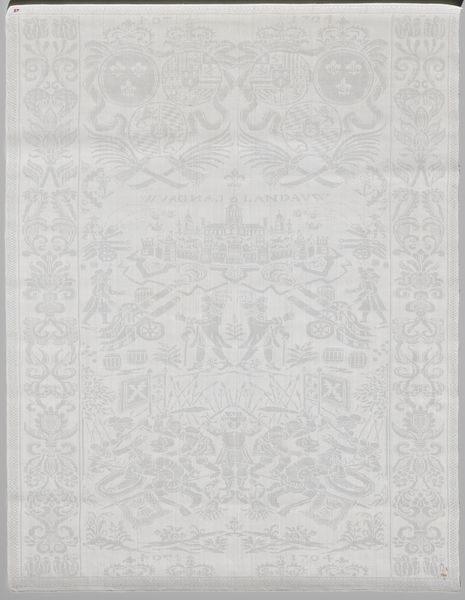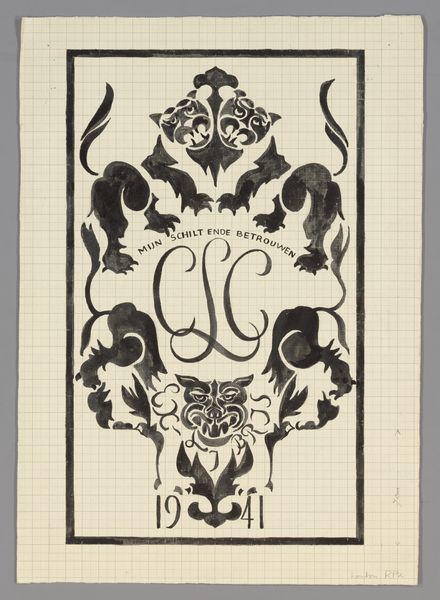
textile, sculpture
#
neoclacissism
#
pattern
#
textile
#
geometric pattern
#
geometric
#
sculpture
#
fabric design
#
decorative-art
Dimensions: L. 96 x W. 22 inches (loom width) 243.8 x 55.9 cm
Copyright: Public Domain
Curator: This textile, "L'Autel," was crafted by Jean Démosthène Dugourc sometime between the 1780s and 1790s. We're fortunate to have it here at The Met. Editor: It looks like it was plucked right out of Marie Antoinette's daydream. All restrained elegance and hidden symbolism. Gives me the shivers, a good shiver! Curator: Indeed, Dugourc's piece exemplifies Neoclassicism’s fascination with antiquity. The repetitive geometric patterns and symbolic motifs place it within a context of both political and social reform, hearkening back to what was perceived to be the virtues of republican Rome. Editor: You're right. There's this tension between order and fantasy. All those swans and urns! Makes me wonder about the lives woven into this fabric. Like, who touched it last? Were they happy? Did they spill tea on it? I do wonder… Curator: The "altar" motif itself— "L'Autel"— suggests a kind of secular sanctification, fitting for an era grappling with changing religious and political structures. The very act of enshrining this classical imagery could be read as a quiet form of resistance against the old aristocratic guard. Editor: Maybe. Or perhaps someone just really, really liked swans. There’s an argument for simple beauty here, a devotion to pattern and light. I am seeing potential fabric designs for my studio. I am inspired. It has an arresting power that draws you in and yet is light enough for contemplation. Curator: Whether resistance or escapism, Dugourc presents a compelling visual dialogue with his time. His design serves as a record of the late 18th century. Its concerns speak even today as we try to navigate our socio-political climate with art, form and vision. Editor: Absolutely! I will leave contemplating the geometry and start working on translating that into movement and expression! I leave a little changed. Thanks Dugourc.
Comments
No comments
Be the first to comment and join the conversation on the ultimate creative platform.

